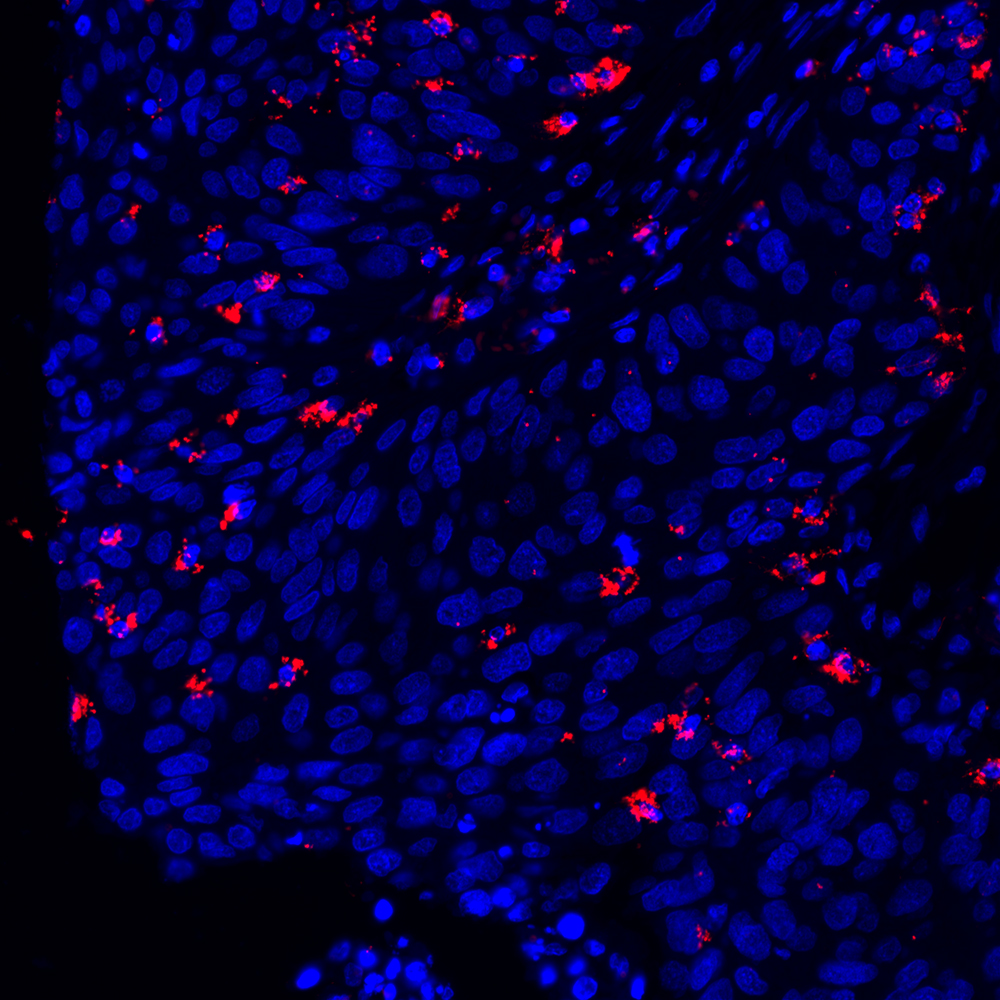Description
The Naveni PD1/PD-L1 Atto647N is an in situ proximity ligation assay kit for the detection of the interaction of PD1 and PD-L1. This in situ kit gives a high signal-to-noise ratio and has an out-standing specificity. The kit is comatible with immunofluorescence co-staining for visualization of the tumor microenvironment. The kit has been validated on FFPE human tissue samples and tested in fresh frozen tissue. Not recommend for mouse tissue. For research use only. Not for use in diagnostic procedures.
The kit is based on our Naveni® Proximity Ligation Technology, with two Navenibodies conjugated to proprietary oligo arms. The technology ensures specific and sensitive detection. One Navenibody binds the PD1 protein, and the other Navenibody binds PD-L1. Probes in close proximity will give a strong and distinct signal, creating a specific and sensitive detection method for the interaction between PD1 and PD-L1.
Product code: PPI.PDL1.FR.100
Included in the kit:
- Navenibody targeting human PD1 protein based on clone EH33 CST
- Navenibody targeting human PD-L1 protein based on clone SP142 Abcam RabMAb®
- Detection fluorophore Atto647N
- Buffers for blocking and dilutions and all detection reagents
- The Navenibody solution has a working volume of 4000µl (sufficient for approx. 100 reactions)
Not included in the kit:
- Tris EDTA antigen retrieval buffer pH 9
- Wash buffer
- DAPI nuclear stain
- Mounting medium
Product is also available with HRP or AP substrate for bright-field readout.
User instructions
Find better prognostic biomarkers
PD1 PD-L1 signaling has with immune checkpoint inhibitors proven to be significant in cancer progression and treatment. Despite the recent success of immune checkpoint inhibitors, many patients do not benefit from these therapies, and predictive biomarkers improving patient stratification are needed. PD-L1 IHC is commonly used as a biomarker, but the correlation between PD-L1 expression levels and PD1/PD-L1 interaction is not always linear.
Naveni PPI
Proteins perform a wide range of functions and are the closest way to understand biology. Proteins are also key targets in both health and disease. When proteins carry out their function, they interact with other proteins or molecules. To understand biological pathways and mode of action, we need to get a deeper insight into protein functions and how the protein interacts. Detecting the interactions has until now been either complicated, unspecific, or insensitive. The Naveni® Proximity Ligation Technology enables visualization of protein-protein interaction using one primary antibody for each target protein, without the need to disrupt the tissue microenvironment.
Keywords: Proximity Ligation Assay, protein protein interaction (PPI), in situ, bright-field, chromogenic, immunohistochemistry, western blot, validated antibodies, Immuno-oncology, immunotherapy, patient stratification, biomarker, drug-target engagement, tissue microenvironment, single-cell resolution, BRET, FRET, Co-IP,
